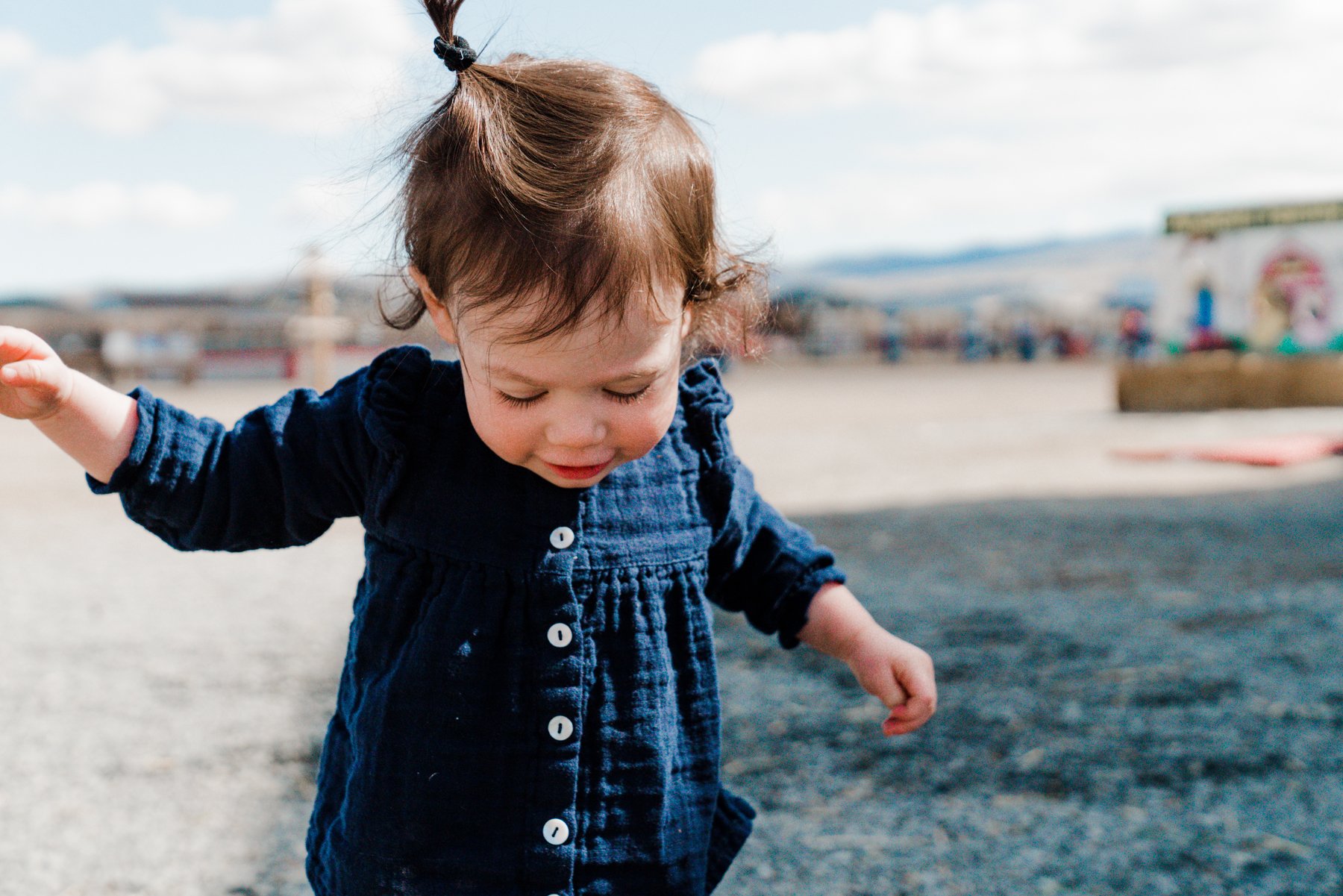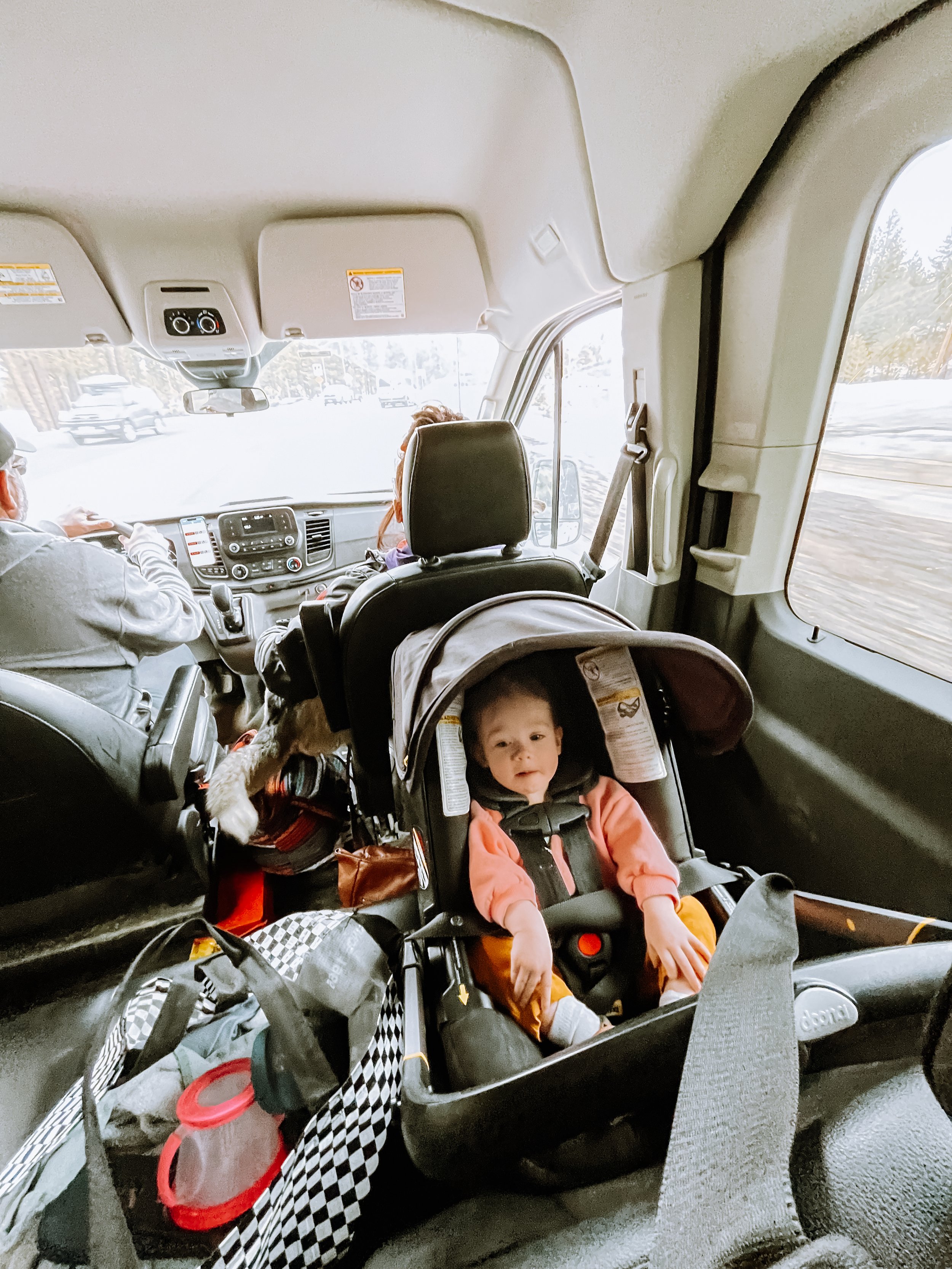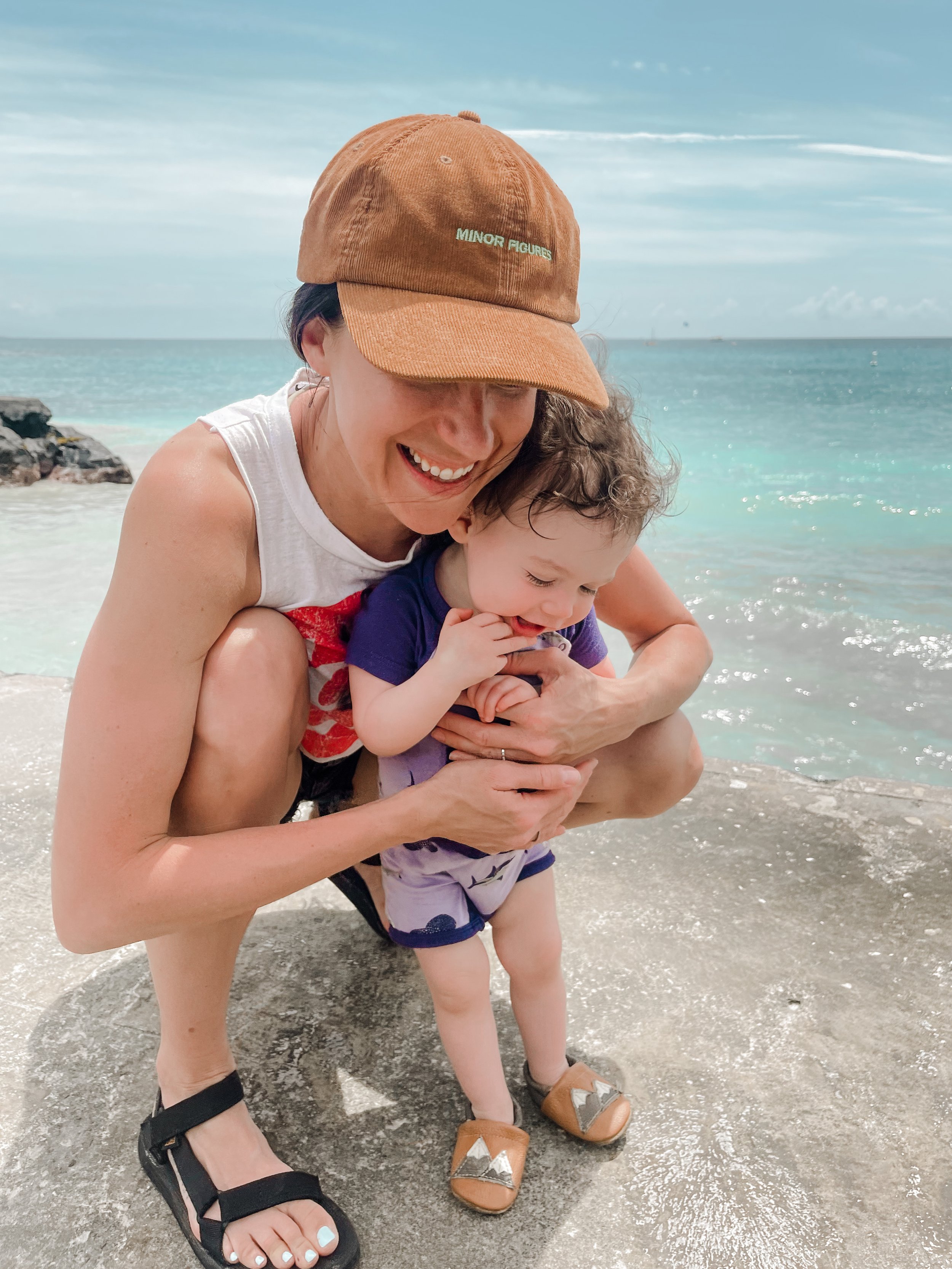While my toddler naps, I’m rushing around the house — a Tasmanian devil wielding a vacuum — and I catch a glimpse of her little handprints splattering the mirror. I picture her earlier that morning high-fiving herself as she basked in the cause and effect of every little thing around her; a very tiny scientist delighting in the mere act of existence. It’s these sticky handprints that break me.
There was once a time I didn’t think I could do this. Not because I didn’t want to, but because I’m going blind.
///
“Do you have any questions?”
After delivering the Official News, my ophthalmologist delicately poised the question over the phone as I walked home from the bus stop 13 years ago. I then told the biggest lie I’d ever said in my life.
“No.”
I knew the facts; had rehearsed them like a script. Retinitis pigmentosa is an incurable eye condition affecting my retinas. I am slowly losing my vision. There is no treatment or cure. I can no longer drive. I had said these words so many times it felt like someone else was saying them. Textbook case of a condition so rare, most physicians only read about it in a textbook.
Did I have any questions? They bubbled out of my soul by the hundreds, quietly demanding answers for a future I could no longer envision.
How does existence trudge on after a life-altering change in course? I pictured infinite what-if scenarios. I knew I’d physically survive, but how do I logistically go on? How will I get around, not being able to drive anymore? How can I maintain independence and strength as a woman in my future marriage while having to rely upon my husband like a child does a parent? How will I be an artist? How does any of my future make sense when a key mobility component is taken away?
The math equation went from Pre-Algebra to advanced Trig in a millisecond. I refused to pity myself, but that didn’t mean accepting my new normal was simple.
Most of all… the tiny, scared whisper that clawed at my heart.
How will I be a mother someday?
In my 22-year-old-brain, the role of mom was taxi driver, shuttling kids to soccer practice and dentist appointments. At least that’s how my own mom talked about it. “Just your friendly neighborhood taxi service!” she’d joke.
I wasn’t going to be your friendly neighborhood taxi service. Could I even do this motherhood thing someday if I couldn’t drive? Should I even do it? Will my husband still love me with the extra burden this is going to place on him? How is this all going to be feasible?
Jesus, why haven’t you healed me when you’ve healed plenty of other blind people?
///
I’m most aware of my vision loss in public places, around other people. I have lost almost all my peripheral vision. I don’t even own headphones as I rely on my hearing to compensate for what I can’t see; I’m in a never-ending two-step my brain choreographs second by second, as I problem solve how to engage with my environment.
There’s an elderly person with a grocery cart; sounds like they’re moving slowly so I have time to pass. The seat belt sign was just turned off; the stranger next to me is likely going to use the lavatory soon. Nick walked out of the kitchen, and I didn’t hear him close the pantry; make sure to not walk into the door.
13 years after the ophthalmologist called to deliver my diagnosis over the phone, I have adapted — not just emotionally and mentally, but also practically. I anticipate the movements of everyone and everything around me at all times, and make micro adjustments accordingly. It’s because of this that I do not appear visually impaired. (It’s also exhausting on my nervous system but that’s another story for another time.) This sixth sense has allowed me to grow octopus arms to care for my curious child and keep her out of harm’s way despite my disability. She is none the wiser.
But let’s be honest, does Harley care that her mother can’t see very well? Does it even matter? I actually laugh out loud as I type the words — my younger self aghast at the reality that’s almost too simple — no, it does not matter.
The math equation just went from advanced Trig to long division. Scratch that, basic addition. You + me = joy.
///
Faith always requires some form of action — Scripture says without works, it’s dead. The active choice I have made to face every single day, not allowing this disease to define me, plays out most obviously in my mobility. Yes, the vision loss itself is also challenging, but let’s be honest: in our society, not driving is kind of a big deal.
But staying stuck at home isn’t an option for me.
I started taking public transit in college, shortly after my diagnosis. I’ll admit: it was humbling for a 22-year-old — learning how to navigate the bus system and getting acquainted with the local homeless and high school populations, but I figured it out. Fast forward a few years, and I became a bike commuter. Fast forward a few more years, and Uber became commonplace. Fast forward a few more and I started running, not just as a form of exercise, but as a form of transportation. Fast forward a few more, and I’m perched on my town’s rickety old shuttle devoted to the disabled with my 15-month-old daughter in her car seat strapped next to me, her face glued to mine, absolutely delighted in the Wheels On The Bus ditty I sing to her; delighted in simply being together, no matter the context.
The mamas on the bus say I love you, I love you, I love you. The mamas on the bus say I love you, all through the town.
We get off the shuttle at the local bakery where happy mothers and toddlers are pouring out of their cars, eager to scamper about in the warm spring weather. I force myself to cover up my slight embarrassment and jealousy with a smile, as we exit the bus and join them in the sunshine.



